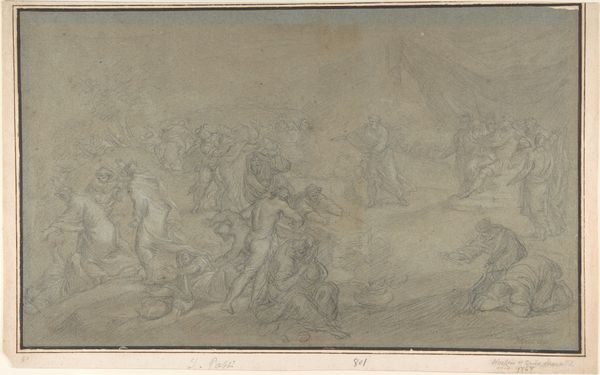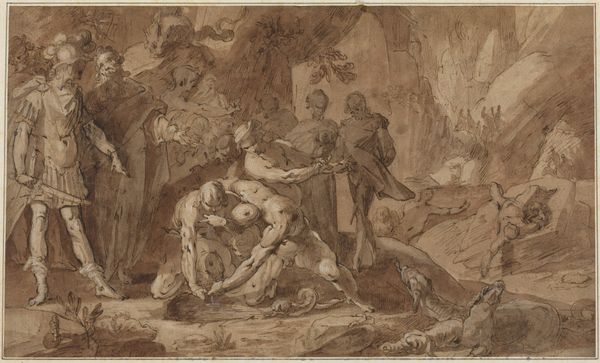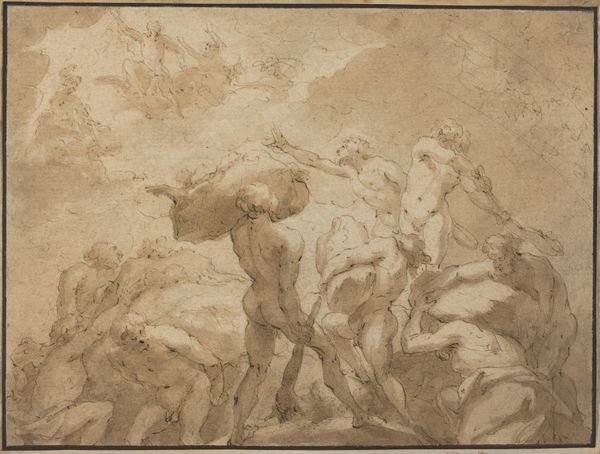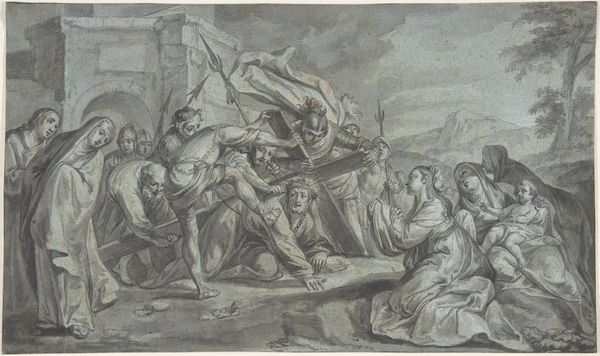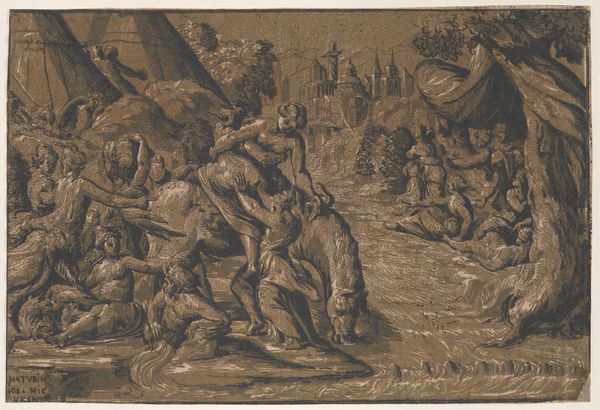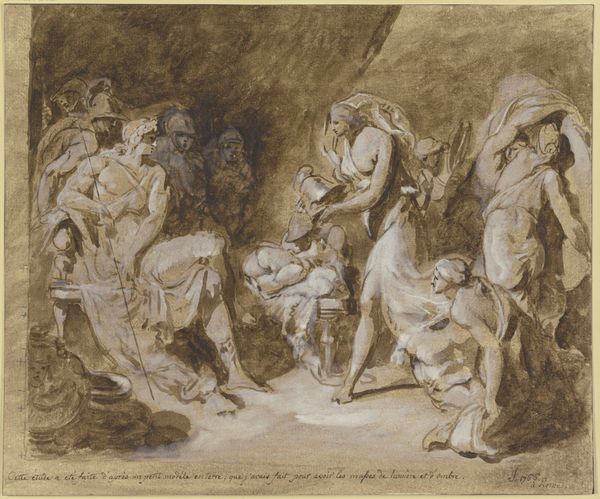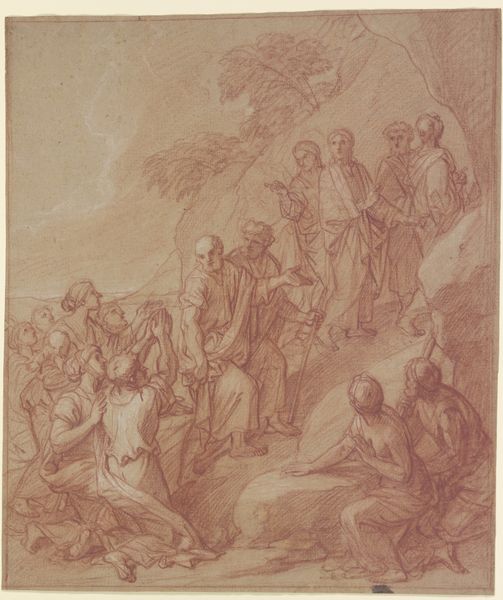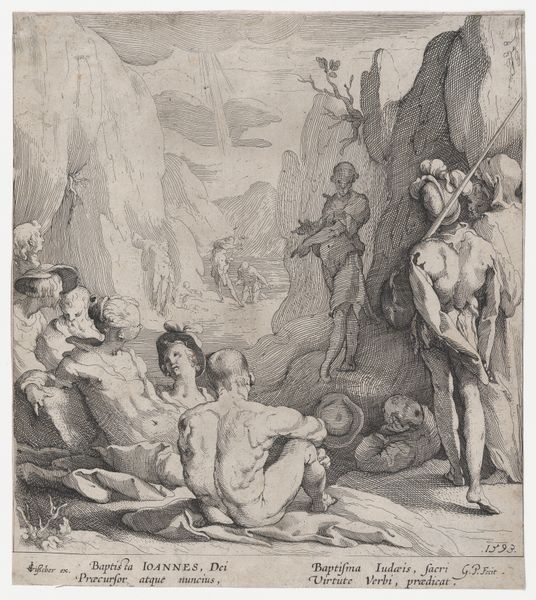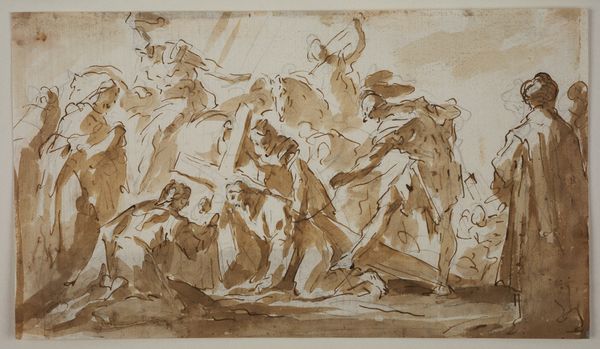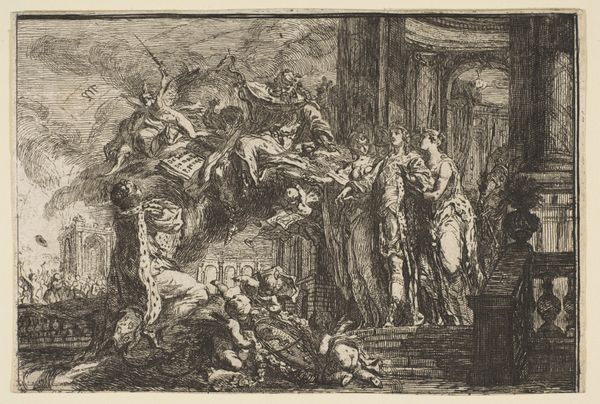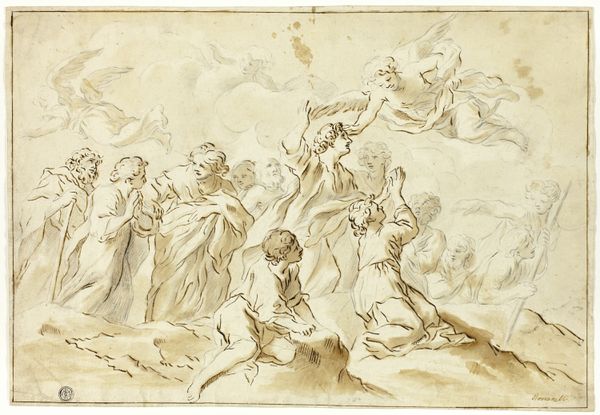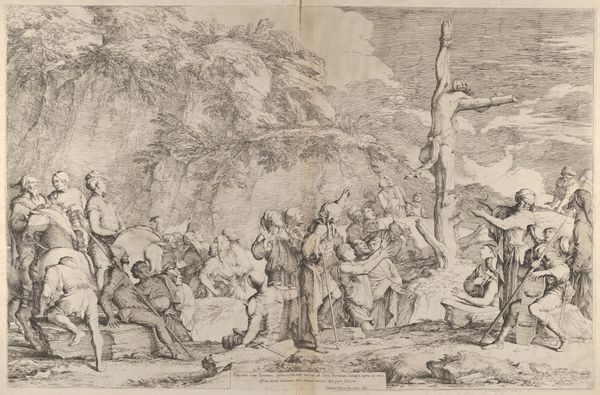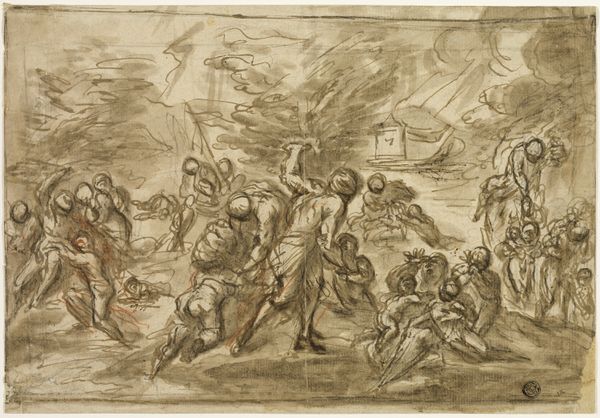
drawing, tempera, paper, ink
#
drawing
#
narrative-art
#
baroque
#
ink painting
#
tempera
#
figuration
#
paper
#
ink
#
history-painting
Dimensions: overall: 21.7 x 32.4 cm (8 9/16 x 12 3/4 in.)
Copyright: National Gallery of Art: CC0 1.0
Curator: Looking at this tempera and ink drawing on paper, titled "The Raising of Lazarus" by Jean-Baptiste Van Loo, the composition strikes me as dramatically lit, despite the monochrome palette. What is your immediate take? Editor: It's undeniably theatrical. The contrast of the light ink against the somber washes really enhances that drama. I find myself wondering about the paper itself – was it readily available, or a more precious commodity that would indicate something about the patronage behind Van Loo's work? Curator: An astute observation. Indeed, the ready availability of paper is crucial. This drawing’s strength resides in the composition, particularly how Van Loo organizes the figures, guiding the eye from the darkness of the tomb to Christ's commanding figure. Note his use of line and wash to create volume and depth. Editor: Yes, the use of light emphasizes the hierarchical dynamic inherent in the narrative of Lazarus being raised by Jesus. This choice of subject suggests the culture of the time and Van Loo's audience. Is this artwork indicative of his relationship to religious institutions or social status? The way that wealth and power manifest themselves in access to artistic production seems notable. Curator: Precisely. "The Raising of Lazarus," beyond its theological implications, showcases the material conditions of artistic creation during that period. Consider how the handling of tempera allowed the artist to create washes efficiently, or even how that relates to time versus payment, impacting what sort of pieces patrons invested in. Editor: Thinking about those patrons... how they consumed works, and why the process mattered, allows for a much fuller view of this history. So, we see, both literally and figuratively, the material of faith shaping art. Curator: Well said. And perhaps an insight that adds a new layer to how we see the play of light and shadow across this compelling piece.
Comments
No comments
Be the first to comment and join the conversation on the ultimate creative platform.
